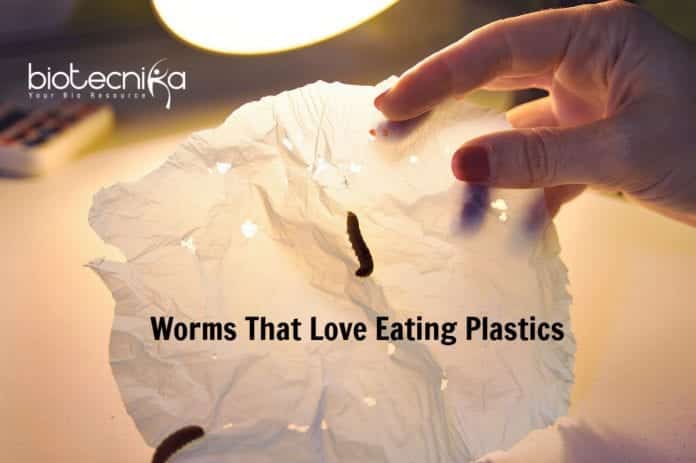Mealworm Toxic Plastic Degradation
According to a new Stanford University study, tiny mealworms can consume various forms of plastic, including potentially toxic plastic additives in Styrofoam with zero ill effects.
The previous study at Stanford University had shown that these mealworms are capable of consuming different forms of plastic.
The Stanford study on mealworms is the first to look at where chemicals in the plastic end up after being broken down in a natural system. The study serves as a proof of concept for deriving value from plastic waste- in this case, the gut of mealworm.
Anja Malawi Brandon, a Ph.D. student, and the study lead added that the scientists were surprised to notice that these tiny mealworms are capable of degrading toxic plastic additives without it building up in their body over a prolonged period.
Mealworm Toxic Plastic Degradation- The Previous Study
In the previous study, Stanford scientists & collaborators at other institutions discovered that mealworms, which are easy to cultivate & widely used as food for animals ranging from chickens to fish & shrimp, can subsist on a diet of various types of plastic. The researchers found that microorganisms in the worms’ guts biodegrade the plastic in the process
However, concern remained about whether it was safe to use the plastic-eating mealworms as feed for other animals. Scientists could not eliminate the possibility that harmful chemicals in plastic additives might accumulate in the worms over time.
Brandon and the team of scientists used Styrofoam or polystyrene, a standard plastic typically used for packaging and insulation, that is expensive to recycle because of its low density & bulkiness. It contained a flame retardant called hexabromocyclododecane, also known as HBCD, that is commonly added to polystyrene. The additive is used to improve plastics’ manufacturing properties or decrease flammability.
Mealworm Toxic Plastic Degradation- Can They Save The World From Plastics?
Mealworms in the experiment expelled about 50% of the polystyrene they consumed as tiny, partially degraded fragments & the other half as carbon dioxide. With it, they discharged the HBCD – about 90% within 24 hours of consumption and substantially all of it after 48 hours. Mealworms that fed a steady diet of HBCD-laden polystyrene were as healthy as those on a regular diet.
While hopeful for mealworm-derived solutions to the world’s plastic waste crisis, Stanford scientists caution that lasting answers will only come in the form of biodegradable plastic replacement materials as well as reduced reliance on single-use products.






























